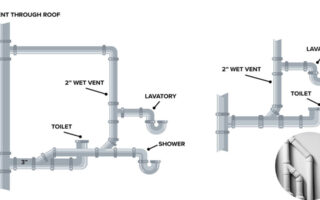House fires are devastating events that can happen to anyone. They can destroy your home, belongings, and even take lives. That’s why it’s crucial to understand how hot a house fire can get and the risks it poses. In this article, we’ll dive into the key facts you need to know about fire temperatures and behavior, so you can better protect yourself and your loved ones.
What Is the Typical Temperature Range of a House Fire?

When it comes to house fires, the temperature can vary depending on several factors. Let’s break down the typical temperature ranges:
Low Range: 300-600°F (Initial Fire Stage)
In the early stages of a fire, the temperature typically ranges from 300 to 600°F. At this point, the fire is just starting to grow, and you might see some smoke and small flames. It’s crucial to act quickly at this stage because the fire can escalate rapidly.
Standard Range: 600-1,100°F (Common Room Fires)
As the fire grows, it enters the normal range of 600-1,100°F. This is when you’ll see more intense flames and a lot more smoke. Fires in this range are common in rooms and can spread quickly if not contained.
High Range: 1,100-2,000+°F (Intense Fires with Flashover Risk)
The high range of 1,100-2,000+°F is where things get really dangerous. At these temperatures, the fire can reach a point called flashover, where everything in the room ignites simultaneously. This is a critical moment that can lead to total destruction and loss of life.
Here’s a table summarizing the temperature ranges and their descriptions:
Temperature Range Description
300-600°F Initial fire stage with small flames and smoke
600-1,100°F Common room fires with intense flames and smoke
1,100-2,000+°F Intense fires with a high risk of flashover
Understanding these temperature ranges is essential for fire safety and assessing the potential damage a fire can cause. The hotter the fire, the more destructive it becomes, and the less time you have to escape.
Factors Influencing How Hot a House Fire Gets
Several factors can influence how hot a house fire gets. Let’s explore some of the key elements:
Fuel Sources: Type and Amount of Combustible Materials
The type and amount of combustible materials in your home play a significant role in determining the fire’s intensity. Materials like wood, paper, and fabric can burn quickly and raise temperatures. On the other hand, non-combustible materials such as metal and stone can help slow the spread of a fire.
Oxygen Availability and Ventilation’s Role in Fire Intensity
Oxygen is the fuel that keeps a fire burning. The more oxygen available, the hotter and more intense the fire can become. Ventilation, such as open windows or doors, can increase the oxygen supply and cause the fire to grow rapidly. That’s why it’s crucial to close doors and windows when escaping a fire to limit the oxygen supply.
Fire Causes and Material Combustibility (e.g., Natural Gas, Plastics)
The cause of the fire and the combustibility of the materials involved can also impact the temperature. For example, a fire caused by a natural gas leak can reach incredibly high temperatures quickly because natural gas is highly flammable. Similarly, plastics and synthetic materials can burn hotter and release toxic fumes, making the fire more dangerous.
Size and Layout of the Room or House Contributing to Heat Buildup
The size and layout of the room or house can affect how heat builds up during a fire. Smaller, enclosed spaces can trap heat, causing temperatures to rise more quickly. On the other hand, larger, open spaces allow heat to dissipate more easily, slowing down the fire’s growth.
According to fire safety experts, these factors can significantly affect how quickly a fire escalates and how hot it can get. Understanding these elements can help you take proactive steps to reduce the risk of a home fire.
How Fast Does the Temperature Rise in a House Fire?
When a fire starts, the temperature can rise rapidly. Let’s take a closer look at the fire progression timeline:
Fire Progression Timeline (Flashover Within Approx. 3 Minutes)
From the moment a fire ignites, it can take as little as 3 minutes to reach flashover. Flashover is the point at which everything in the room ignites simultaneously, creating a deadly and destructive fire. This rapid progression is why it’s so important to have working smoke alarms and a well-practiced escape plan.
Temperature Escalation Rates: Rapid Rise from Low to High Range in Minutes
The temperature of a fire can escalate from the low range of 300-600°F to the high range of 1,100-2,000+°F in a matter of minutes. This rapid temperature rise is due to the fire’s ability to consume more fuel and oxygen as it grows. The hotter the fire becomes, the faster it can spread and the more dangerous it becomes.
Impact of Quick Temperature Rise on Occupants’ Safety and Escape Chances
The rapid rise in temperature during a fire can significantly affect occupants’ safety and their ability to escape. As the temperature rises, the air becomes filled with toxic smoke and gases, making it harder to breathe and see. The intense heat can also cause burns and respiratory damage, even before the flames reach you.
The Concept of Flashover and Its Critical Temperature (~1,000°F)
A flashover is a critical moment in a fire when the temperature reaches around 1,000°F, igniting everything in the room simultaneously. This sudden, intense heat can be deadly, trapping occupants and making escape nearly impossible. Understanding the concept of flashover and its critical temperature can help you appreciate the urgency of evacuating a burning building as quickly as possible.
What Happens to a House at Different Fire Temperatures?

As a fire progresses and temperatures rise, the damage to your home can become more severe. Let’s explore what happens to a house at different fire temperatures:
Low Range: Surface Damage, Early Warning Signs
At low temperatures between 300 and 600°F, you may see surface damage to your home’s contents and structure. You might notice discoloration, melting, or charring of materials like plastics, fabrics, and wood. At this stage, smoke alarms should be sounding, giving you an early warning to evacuate.
Standard Range: Structural Damage, Contents Destruction
As the fire enters the normal temperature range of 600-1,100°F, the damage becomes more severe. The structure of your home can start to weaken, with walls, floors, and ceilings becoming compromised. The contents of your home, including furniture, appliances, and personal belongings, can be entirely destroyed by the intense heat and flames.
High Range: Total Loss, Potential Structural Collapse
When a fire reaches the high temperature range of 1,100-2,000+°F, the damage can be catastrophic. At these temperatures, the fire can cause a total loss of your home, with the structure potentially collapsing from the extreme heat. The heat can also cause materials like steel to warp and concrete to crack, making the building unsafe and unstable.
Effects of Extreme Heat on Building Materials (Wood Burning, Steel Warping)
Extreme heat can significantly impact the building materials used in your home. Wood can burn and char, losing its structural integrity. Steel can warp and bend, compromising the strength of beams and supports. Even concrete can crack and spall, exposing the reinforcement inside. These effects can make it difficult for firefighters to enter the building and can result in the complete loss of the structure.
Firefighters’ Challenges Operating in Extreme Heat Environments
Firefighters face significant challenges when operating in extreme heat environments. The intense heat can make it difficult to breathe, even with protective gear. The heat can also cause their equipment to malfunction or become damaged, putting them at risk. Additionally, the high temperatures can cause the fire to spread rapidly, making it harder to contain and extinguish.
Understanding what happens to a house at different fire temperatures can help you appreciate the importance of fire prevention and safety measures. By taking steps to reduce the risk of a fire and being prepared to evacuate quickly, you can help protect your home and loved ones from the devastating effects of a fire.
Health Risks and Safety Concerns from Fire Heat
The heat generated by a fire can pose significant health risks and safety concerns for occupants. Let’s explore some of the key issues:
Heat Impact on Human Survival and Injury Risks at Different Temperature Points
As a fire’s temperature rises, the risk of injury and death increases. At lower temperatures, you may experience heat exhaustion or heatstroke, which can lead to dizziness, nausea, and loss of consciousness. As the temperature reaches the normal range, you can suffer from severe burns, respiratory damage, and even death. At the highest temperatures, the heat can be so intense as to cause instant death.
Dangers of Flashover and Smoke Inhalation in High-Temperature Fires
Flashover and smoke inhalation are two of the most dangerous aspects of high-temperature fires. Flashover can trap occupants and make escape nearly impossible, while smoke inhalation can lead to respiratory distress, unconsciousness, and death. The toxic gases and particles in smoke can also cause long-term health problems, even if you survive the initial fire.
Importance of Fire Alarms and Quick Evacuation to Avoid Heat Injury
Fire alarms and quick evacuation are crucial for avoiding heat injury during a fire. Smoke alarms can provide an early warning, giving you precious time to escape before the fire becomes too intense. Having a well-practiced evacuation plan and knowing multiple escape routes can help you get out of the building quickly and safely, reducing your risk of heat injury.
Fire Prevention and Safety Tips Considering Fire Temperatures
Given the risks associated with fire temperatures, it’s essential to take proactive steps to prevent fires and ensure your safety. Here are some key tips to consider:
Early Fire Detection and Alarm Systems: Importance
Installing smoke alarms throughout your home and testing them regularly are among the most critical fire prevention measures you can take. Smoke alarms can detect a fire in its early stages, giving you time to evacuate before the temperature rises to dangerous levels. Consider installing heat detectors in areas like the kitchen or garage, where smoke alarms may be prone to false alarms.
Fire-Resistant Building Materials That Withstand Higher Heat
Using fire-resistant building materials can help slow down the spread of a fire and reduce the risk of high temperatures. Materials like fire-resistant drywall, treated wood, and non-combustible insulation can help contain a fire and give you more time to escape. When renovating or building a new home, consider using these materials to enhance your fire safety.
Safe Storage of Combustible Materials and Fuel Sources
Properly storing combustible materials and fuel sources can help prevent fires from starting in the first place. Keep flammable liquids, like gasoline and paint thinner, in well-ventilated areas away from heat sources. Store matches, lighters, and candles out of reach of children and pets. And never leave cooking unattended, as grease fires can quickly escalate and reach high temperatures.
Fire Extinguishing Methods Effective at Different Fire Stages
Knowing how to extinguish a fire at different stages can help you prevent it from reaching high temperatures. In the early stages, you can use a fire extinguisher or a bucket of water to put out the flames. As the fire grows, you may need to use a fire blanket or close the door to contain the fire and limit its oxygen supply. Never attempt to fight a fire at high temperatures, as it can be hazardous.
Preparing Evacuation Plans and Fire Drills for Quick Escape
Having a well-practiced evacuation plan and conducting regular fire drills can help you escape a fire quickly and safely. Make sure everyone in your household knows multiple escape routes from each room and has a designated meeting place outside. Practice your evacuation plan at least twice a year and update it as needed to reflect changes in your home or family.
By following these fire prevention and safety tips, you can reduce the risk of a fire reaching high temperatures and protect yourself and your loved ones from the devastating effects of a fire.
What to Do if a House Fire Occurs?

Despite your best efforts to prevent a fire, it’s still possible for one to occur. If you find yourself in a house fire, here’s what you should do:
Immediate Safety Steps: Focusing on Protecting Life First
Your top priority during a house fire should be protecting your life and others’. If you hear the smoke alarm or see signs of a fire, evacuate the building immediately. Don’t waste time gathering belongings or trying to fight the fire yourself. Every second counts when it comes to escaping a fire safely.
Importance of Not Underestimating the Fire’s Heat and Speed
It’s easy to underestimate the heat and speed of a fire, especially in the early stages. But as we’ve discussed, a fire can escalate rapidly, reaching high temperatures in just a few minutes. Don’t assume you have more time than you do. Treat every fire as a serious threat and evacuate as quickly as possible.
Calling Emergency Services Quickly
As soon as you’re safely outside, call emergency services to report the fire. Please provide them with your address and any relevant details about the fire, such as its location in the building and any people or pets still inside. The faster the fire department can respond, the greater their chance of containing the fire and preventing it from reaching high temperatures.
Avoiding Re-Entry Due to Dangerous High Temperatures
Once you’ve evacuated a burning building, it’s crucial to stay out. The heat and smoke inside can be deadly, even if the flames appear to be under control. Don’t re-enter the building to retrieve belongings or search for missing people or pets. Leave that to the trained firefighters, who have the equipment and expertise to navigate the dangerous conditions safely.
By following these steps during a house fire, you can increase your chances of escaping safely and avoiding the risks associated with high temperatures.
Advances in Fire Safety Technology Relating to Fire Heat
Fire safety technology has come a long way in recent years, with new innovations designed to help prevent fires from reaching high temperatures. Here are some of the latest advances:
Fireproof Doors, Windows, and Safes Rated for Extreme Temperatures
Fireproof doors, windows, and safes can help contain a fire and protect your home and belongings from high temperatures. These products are rated for extreme temperatures, with some doors and windows able to withstand up to 1,200°F for several hours. Fireproof safes can protect important documents and valuables from heat damage, giving you peace of mind during a fire.
Modern Materials Designed to Resist 1,100°F+ Heat Loads
New building materials are being developed to resist heat loads of 1,100°F and above. These materials, such as fire-resistant insulation and treated wood, can help slow down the spread of a fire and reduce the risk of high temperatures. By incorporating these materials into your home, you can enhance your fire safety and protect your family and property.
Sensors and Fire Suppression Systems That Detect and Act in Early Stages
Advanced sensors and fire suppression systems can detect a fire in its early stages and act quickly to put it out before it reaches high temperatures. These systems use heat, smoke, and gas sensors to detect a fire and trigger an alarm or activate a suppression system. Some systems can even send alerts to your smartphone, allowing you to take action even if you’re not at home.
By staying up to date with the latest fire safety technology and incorporating these advances into your home, you can reduce the risk of a fire reaching high temperatures and protect your family and property from the devastating effects of a fire.
How Hot Does a House Fire Get? FAQ
What is the Maximum Temperature of a House Fire?
A house fire can reach temperatures of over 2,000 degrees Fahrenheit (1,093 degrees Celsius), which poses a severe threat to both life and property . These extreme temperatures can occur during flashover, a critical point where everything in a room ignites simultaneously.
How Quickly Can a House Fire Reach High Temperatures?
House fires can escalate rapidly. Within 2-3 minutes, temperatures can reach 1,000°F, prompting flashover and engulfing a room. At 5 minutes, temperatures can near 1,300-1,500°F, heating drywall and framing . In some cases, flashover has been observed to occur in just 4.5 minutes .
What are the Temperature Variations Within a House Fire?
The heat in a house fire is not evenly distributed. At floor level, the temperature may be around 100 degrees Fahrenheit, but it can rise to 600 degrees at eye level . This variation is due to the fact that heat rises, making the upper levels of a room significantly hotter than the lower levels.
How Do Modern Homes Affect Fire Temperatures?
Modern homes, filled with synthetic materials, tend to burn significantly hotter and faster than older homes . These materials can contribute to the rapid escalation of temperatures during a fire, making it even more crucial to have effective fire prevention and safety measures in place.
What is Flashover and At What Temperature Does It Occur?
Flashover is a critical point in a fire where everything in a room bursts into flame, even if the actual fire was previously confined to a small area. The flashover point is typically around 1,000°F. At this temperature, the fire can quickly spread throughout the room, making it extremely dangerous for occupants.
How Hot Can a High-Rise Fire Get?
High-rise fires typically burn at around 593 degrees Celsius or 1,100 degrees Fahrenheit . These temperatures can still be extremely hazardous, and it’s essential for residents of high-rise buildings to have a well-practiced evacuation plan in case of a fire.




